Pharmanex BioPhotonic S1 Scanner Model BPS473
with BWtek BTC100-2S spectrometer
THE DEVICE
Purchased as "non-functional" on ebay for $19.99.
The laser puts out a blue light, but it is not single wavelength at 473nm.
The spectrometer's controller is communicating via RS-232 serial port,
but when a spectrum is requested it only returns zeroes.
The CCD chip, it's driver, or the ADC needs repair.
The spectrometer has a 1800 l/mm grating with most of the linear CCD masked off
allowing only a blue-green portion of the spectrum to hit the detector.
The dichroic beamsplitter seems to have a fickled T-R spectra.


History
This device was supposedly for measuring carotinoids in the skin of your palm
to determine how much anti-oxidants are in your whole body.
The milliwatt 473nm blue laser hits the skin and the spectrometer then, supposedly,
looks for a resonant Raman peak at 510nm (1533.8 cm-1). The more recent model (S3)
claims to use a 478nm laser and looks for a single peak at 518nm (1615.5 cm-1).
An NIH hosted paper on the original development of the device (see references below)
used a 488nm Argon laser at ~5mW for 20 seconds on the skin of a palm
to measure peaks from 700 cm^-1 (505nm) - 2100 cm^-1 (544 nm) at
1008 cm^-1 (513nm), 1159 cm^-1 (517nm), and 1524 cm^-1 (527nm)
using resonant Raman spectroscopy.
What is the S3 Scanner?
Carotinoid Raman Spectra
Device Manufacturer
The manufacturer of the device is B&W Tek.
B&W Tek made the i-Raman desktop device used at Sterling Hill. Many of parts in the biophotonic scanner
are generally useful for other projects. Replacing 25x17x1.5mm dichroic beamsplitter with a more
suitable one would make the fiber optic assembly would be possible.
Notes
The B&W Tek spectrometer is the same as the one sold by Science Surplus,
but it may have slightly different firmware.
Spectrometer Calibration Coefficents:
The spectrometer does not appear to support calibration coefficients.
The firmware has a "Cn " command for entering coefficients
and a "C?" for retrieving them but they don't seem to be working.
BWTek spectrometer serial protocol
ADC1000-USB A/D Converter (similar)
It is responding to the same commands as the Sciene-Surplus spectrometer.
I don't know yet how to decipher the calibration coefficients (only returns 32 bytes not 48)
and the spectrum is completely dark (all zeroes).
The spectrometer optics is custom configured with baffles to
block out part of the spectral range. See pictures below.
There is a ribbon cable connection between the spectrometer and the
laser's microcontroller. I do not know what its function.
There are some undocumented commands on the spectrometer (?E, ?M, ...)
The grating is 1800 l/mm.
The laser is showing multiple peaks and ragged spectrum.
The laser diode supposedly pumps at 808nm but I have not measured it.
The beam splitter assembly was designed to have a palm pressed right up
against a quartz window. The output fiber to the spectroscope is
focused on the plain of that quartz window.
Unknown filter behind the entrance slit of the spectrometer.
Laser
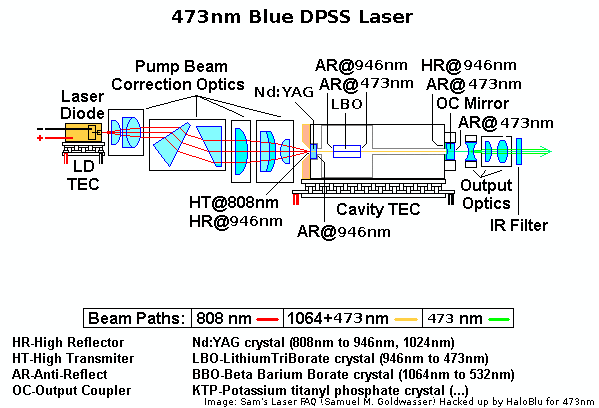 The output from the laser is measured by a photodiode in the front of the head
and fed back to the controller. It appears to shut off the laser for any
resistance <=45K as a cheap form of power regulation.
The output from the laser is measured by a photodiode in the front of the head
and fed back to the controller. It appears to shut off the laser for any
resistance <=45K as a cheap form of power regulation.

The blue laser's peak is a little to the left of where the neon calibration expected it.
This was made using the Labram's spectrograph, but without the laser's IR filter and
power regulating feedback diode.
Spectrometer
Beam Splitter
The spectra were scanned with the device using the Science-Surplus spectrometer
connected to the Pharmanex beamsplitter and blue laser. Many mineral specimens
displayed only the "default" spectrum (similar to the one for white paper).
A white piece of paper:
 A fluorescent orange paper label:
A fluorescent orange paper label:
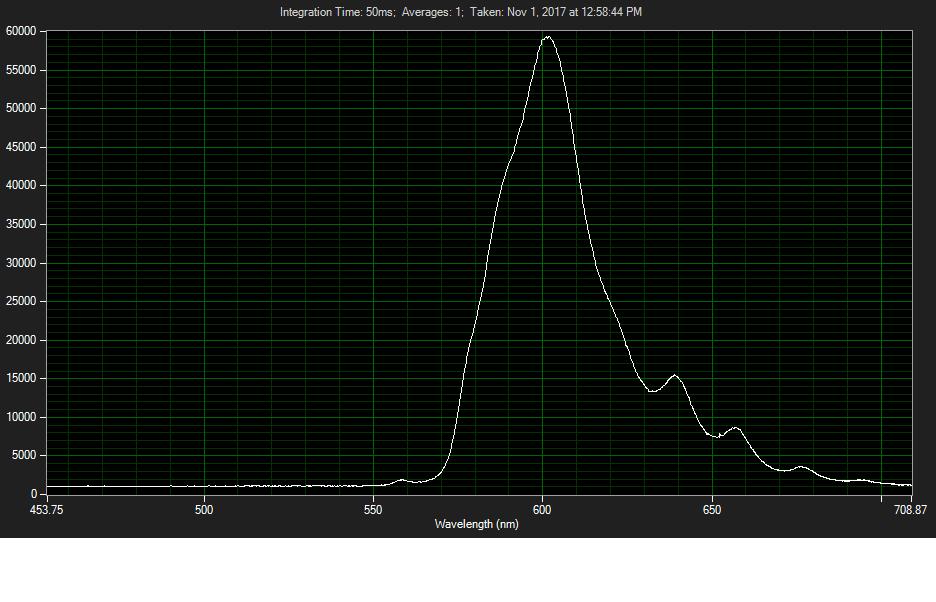 kyanite (blue), Brazil:
kyanite (blue), Brazil:
 kyanite (blue/grey), Macedonia:
kyanite (blue/grey), Macedonia:
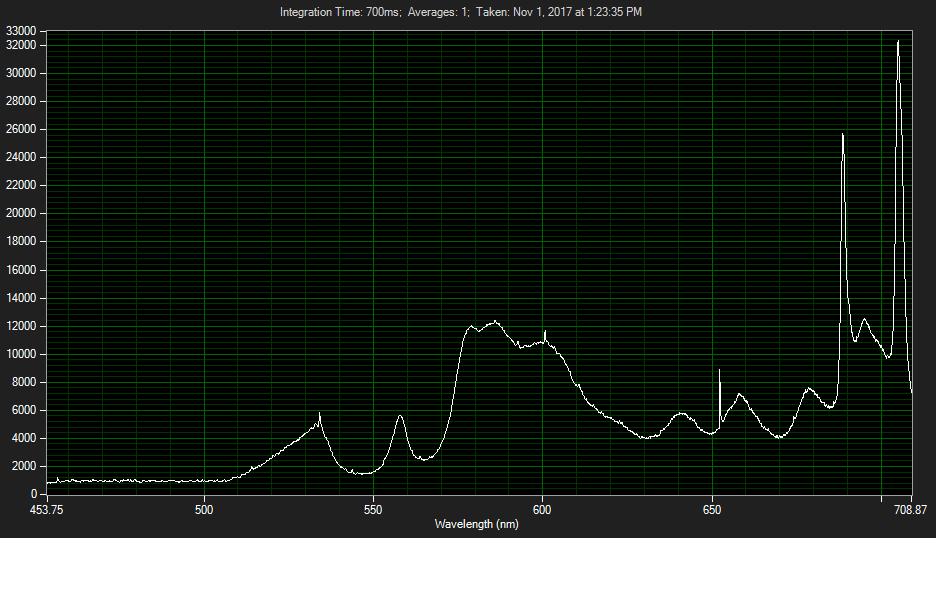 kyanite (blue), Sweden:
kyanite (blue), Sweden:
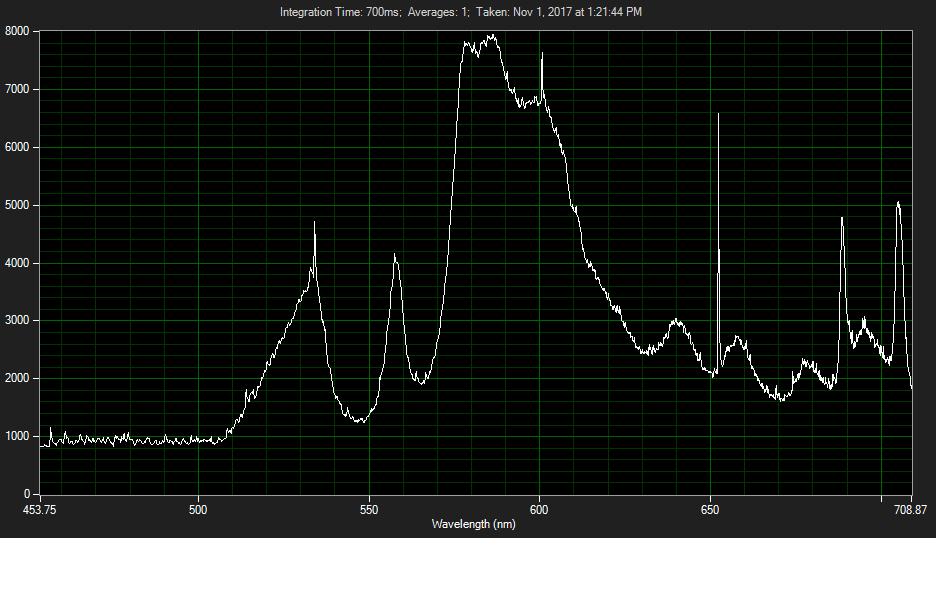 kyanite (green), North Carolina:
kyanite (green), North Carolina:
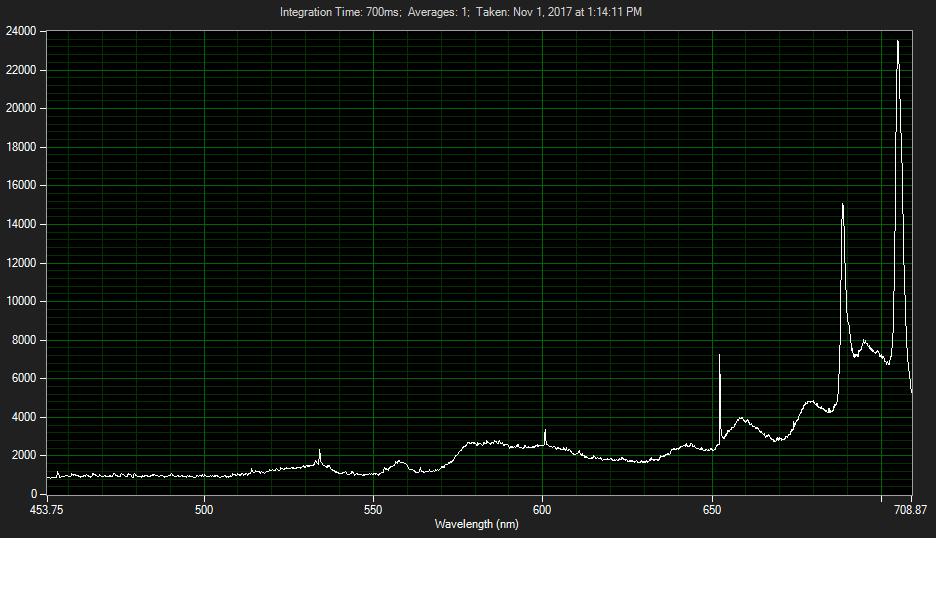 willemite (FL-green), New Jersey:
willemite (FL-green), New Jersey:
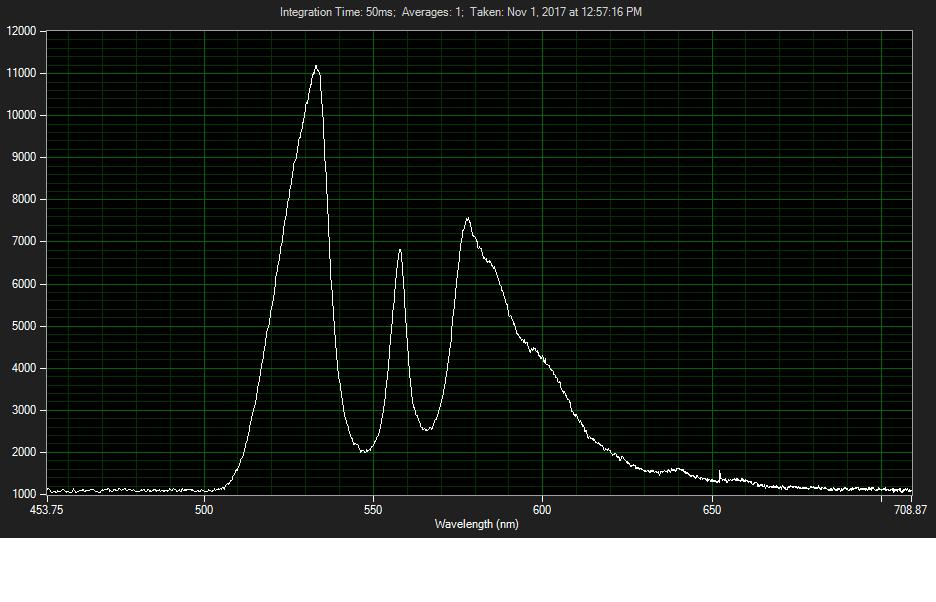
Reference
Resonance Raman Spectroscopy
Forums:
LaserPointerForum
PhotonLexicon 1
PhotonLexicon 2
Sam's Laser Repair FAQ
(532nm but same control circuits)
473nm laser (video about)
Alexander Impertro's blog
BPS473 Photonic Scanner
Skin Carotenoid Status Measured by Resonance Raman spectroscopy
as a Biomarker of Fruit and Vegetable Intake in Preschool Children (PDF)
"The palm of each child was scanned three times for reliability
at an exposure time of 30 s per scan,"
These two papers stray from their titles to promote carotinoids as supplements:
Resonance Raman detection of carotenoid antioxidants in living human tissue (PDF)
Non-invasive Raman spectroscopic detection of carotenoids in human skin. (PDF)
Caveat emptor
EOF


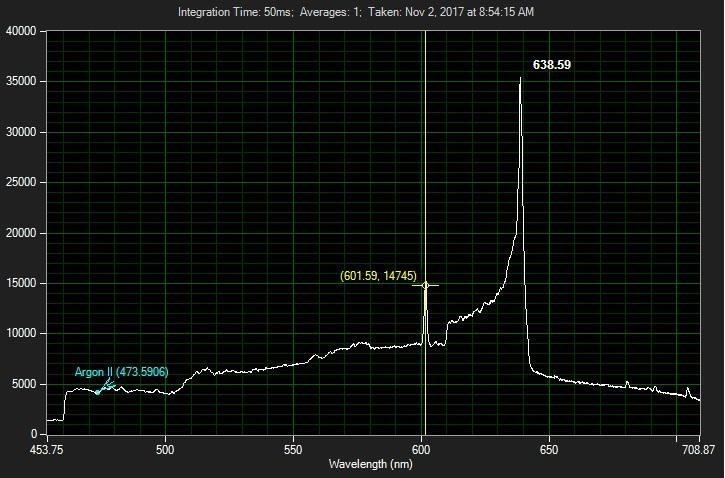

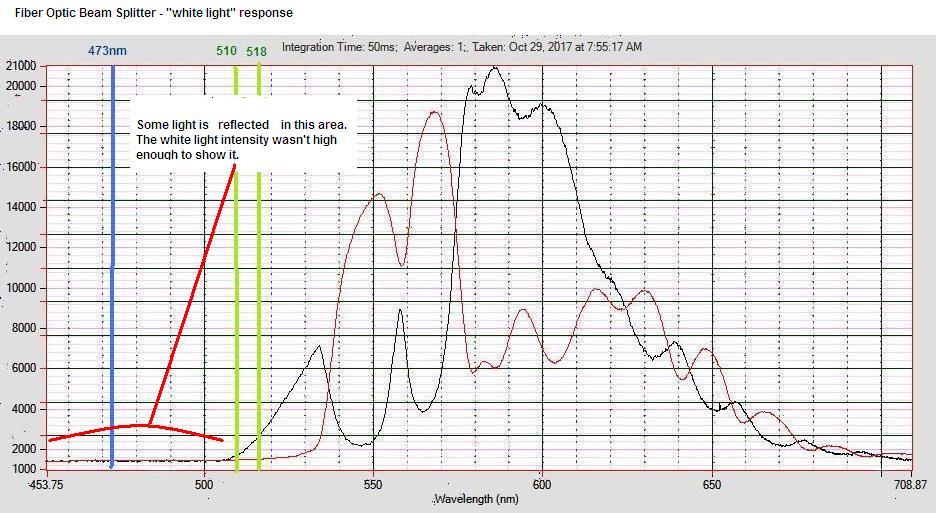
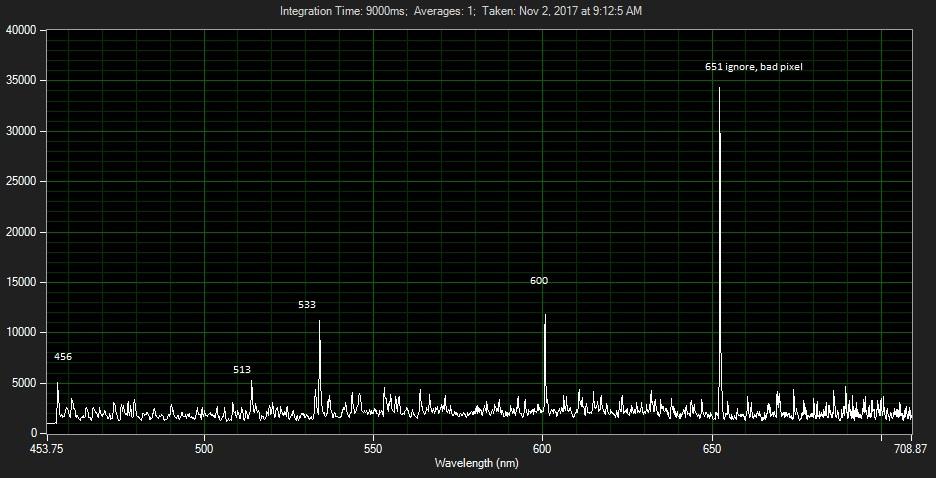

A fluorescent orange paper label:
kyanite (blue), Brazil:
kyanite (blue/grey), Macedonia:
kyanite (blue), Sweden:
kyanite (green), North Carolina:
willemite (FL-green), New Jersey:
